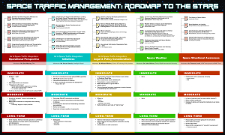Start Date
12-11-2015 1:00 PM
Abstract
Unmanned Aircraft Systems (UAS) are going to be integrated into the National Airspace (NAS) as well as into the Single European Sky (SESAR). I. e. the European Roadmap describes a step by step approach with a full integration by 2028. Currently space vehicles are also developed to fly remotely piloted in space as well in near orbits or during reentry. Although they will fly without pilot operations on board, they may carry passengers or astronauts, respectively, or they will operate as a fully unmanned freighter to transport supply to the ISS or other space based stations. Currently these flights are operated in segregated airspace during launch and landing. When the number of flights will increase due to the commercialization of space transport, the use of restricted airspace will be no more feasible. To manage segregated airspace is costly and it is affecting the capacity of the air transport system. As the concepts and technology for air traffic insertion of UAS currently exist to a quite matured level, they should be also applied to space vehicles. A concept will be proposed which considers not to fully apply all rules for manned aircraft but to create a system for integration according to achieve an equivalent level of safety for unmanned aircraft and spacecraft.
Area of Interest
NAS Integration

Integration of UAS in Air Traffic and Commercial Space Management
Unmanned Aircraft Systems (UAS) are going to be integrated into the National Airspace (NAS) as well as into the Single European Sky (SESAR). I. e. the European Roadmap describes a step by step approach with a full integration by 2028. Currently space vehicles are also developed to fly remotely piloted in space as well in near orbits or during reentry. Although they will fly without pilot operations on board, they may carry passengers or astronauts, respectively, or they will operate as a fully unmanned freighter to transport supply to the ISS or other space based stations. Currently these flights are operated in segregated airspace during launch and landing. When the number of flights will increase due to the commercialization of space transport, the use of restricted airspace will be no more feasible. To manage segregated airspace is costly and it is affecting the capacity of the air transport system. As the concepts and technology for air traffic insertion of UAS currently exist to a quite matured level, they should be also applied to space vehicles. A concept will be proposed which considers not to fully apply all rules for manned aircraft but to create a system for integration according to achieve an equivalent level of safety for unmanned aircraft and spacecraft.


